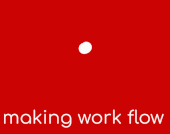Poor print management can result in wasteful printing and the use of out-dated or redundant devices can lead to high energy consumption and increased running costs. Implementing responsible printing practices can go a long way to improving an organisation’s environmental credentials as well as significantly reducing costs.
As paper remains an important part of many business work-flows, the focus must be on the “less paper office” rather than the utopian ideal of the “paperless office”. The nature of printing may also be changing – rather than outsourcing high-quality printing, it is conducted in-house and documents are printed as and when required.
Managed print services seek to address new requirements for printing in the 21st Century by ensuring that print facilities operate cost effectively and securely with minimal environmental impact.
Other simple steps to reduce the environmental impact of printing include using recycled paper, implementing duplex printing and company-wide print policies that encourage employees to print responsibly.
But to make real savings, companies need to have complete visibility on their printing devices, volumes and overall costs. This requires a true picture of how many devices there are in the organisation and what is being printed where and by whom.
Managed print services address these processes in three main stages – the assessment, optimisation and ongoing management of the print environment:
In our managed print assessment process we carry out a comprehensive audit of all current devices including location and print volumes. The intention is to report all aspects of the existing set up – this information is translated into presentation format in order to show a complete picture of the current work-flow.
Optimisation involves our proposals for introducing a fully managed print environment. An ideal opportunity to cull an existing fleet of printing devices, we then provide new desktop devices with both mono and/or full colour features in a compact, high speed, duplex, networked unit. Consolidation brings order to the printer chaos by replacing single function, outdated and inefficient devices with modern energy efficient multi-function ones to reduce energy usage and enable enforced policies.
Our ongoing management includes the introduction of PaperCut software which will allow for the implementation of ‘rules based printing’ and print monitoring. This will quantify and report print volumes and allow for a repeat of these reports to enable an understanding of changes within the printing environment.
The ultimate goal is to optimise and reduce the number of desktop printers installed across the network and leave devices which are then fully controlled and monitored in terms of both usage and cost.
Find out more about managed print services from ASL here.

